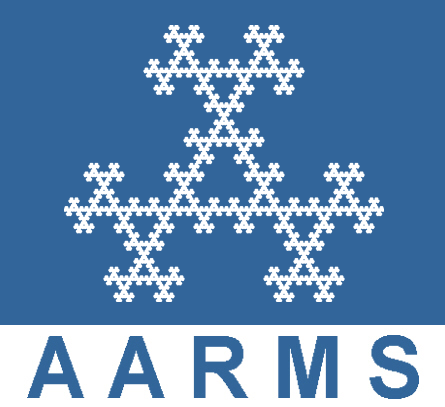2017 CMS Winter Meeting
Waterloo, December 8 - 11, 2017
- JACQUES BÉLAIR, Université de Montréal
An age-structured model with dynamic death rate [PDF]
-
We consider a general age-structured model for the regulation of red blood cells in which the lifespan of the circulating cells is determined by a general survival function. Using techniques borrowed from demography, an associated death rate is introduced into the modeling equations, and standard methods for the integration of the latter yield a coupled system of differential and integral equations. The stability of the equilibria of this system is analyzed, and Hopf bifurcations are detected. We pay particular attention to the relationship between these stability properties, the survival function specifics and the distribution of lifespans of the erythrocytes.
This is joint work with Frédéric Paquin-Lefebvre.
- MONICA COJOCARU, University of Guelph
Linking generalized Nash games and replicator dynamics [PDF]
-
In this talk I plan to introduce an evolutionary steady state concept related to a generalized Nash game (GN) and a replicator dynamics. Generalized Nash games were introduced in the 50’s, and represent models of noncooperative behaviour among players whose both strategy sets and payoff functions depend on strategy choices of other players.
<p></p>
Evolutionary games consist of populations where individuals play many times, against
many different opponents, with each contributing a relatively small contribution to
the total reward. Given strategies $\{1,...,n\}$, an individual of $type$ $i$ is one using strategy $i$, and $x_i$ is the frequency of $type\,i$ individuals in the population. Thus the vector $x=(x_1,...,x_n)$ in the unit simplex is the state of the population. Interaction between players of different types can be describes by linear or nonlinear payoffs; assume that a player of $type\,i$ has a payoff $a_i(x)$, and they want to maximize it subject to a choice of strategies. The dynamic evolution of such game is described by the replicator dynamics $\dot{x}_i(t)=x_i(a_i(x)-\sum_i x_i a_i(x)), \forall i$.
Assuming shared constraints imposed on the game (i.e. $g(x)\leq B$ where $B$ would be the upper limit of resource for instance) a replicator dynamics has to satisfy the new constraints, becoming a constraint dynamics of the type known in literature as a projected dynamical system. The new dynamics and its relation to the GN needs to be investigated: the main questions we present here refers to highlighting under what conditions Folk's Theorem type results would hold in this new setting.
- WENYING FENG, Trent University
Eigenvalue Intervals for Nonlinear Operator Equations in Ordered Banach Spaces [PDF]
-
We first extend results on existence of positive solutions for differential equations with separated boundary conditions. The results are further generalized to study eigenvalue problems for operator equations in the form of $x=\lambda T(x)$, where $T$ is an nonlinear map defined on an ordered Banach space, and $\lambda$ is a parameter. Some new abstract results are obtained and applied to concrete problems such as Hammerstein integral equations, discrete dynamical systems and boundary-value problems for semi-linear fractional differential equations. Part of the work was joint with Kaly Yanlei Zhang.
- MICHAEL LI, University of Alberta
Dynamics of a continuous state-structured model for infectious diseases [PDF]
-
In this talk, I will describe a state-structured epidemic model for infectious
diseases in which the state structure is nonlocal. The state is a measure
of infectivity of infected individuals or the intensity of viral replications
in infected cells. The model gives rise to a system of nonlinear integro-differential
equations with a nonlocal term. I will show the well-posedness and dissipativity
of the associated nonlinear semigroup by overcoming a lack of compactness
due to the integral form of the equations. By establishing an equivalent principal
spectral condition between the linearized operator and the next-generation
operator, I will show that the basic reproduction number $R_0$ is
a sharp threshold: if $R_0<1$, the disease-free equilibrium is globally
asymptotically stable, and if $R_0>1$, the disease-free equilibrium is
unstable and a unique endemic equilibrium is globally asymptotically stable.
Our proof of the global stability of the endemic equilibrium utilizes a global
Lyapunov function whose construction was motivated by the graph-theoretic
method for coupled systems on discrete networks developed by Guo-Li-Shuai.
This is a joint work with Drs. Zhipeng Qiu and Zhongwei Shen.
- KYEONGAH NAH, York University
Stability threshold for linear periodic delay differential equations [PDF]
-
We consider a single species population growth model with periodically varying recruitment and mortality rates with fixed length of developmental period. The linear stability of the trivial solution is determined by the variational equation,
\[
x^{\prime}(t) = -a(t)x(t) + b(t)x(t-1).
\]
We investigate the stability threshold and demonstrate the theoretical results with numerics motivated by tick population dynamics.
- MANUELE SANTOPRETE, Wilfrid Laurier University
Mathematical Models of Radicalization [PDF]
-
Radicalization is the process by which people come to adopt increasingly extreme political, social, or religious ideologies. In recent years radicalization has become a major concern for national security because it can lead to violent extremism. It is in this context that this talk attempts to describe radicalization mathematically by modelling the spread of extremist ideology as the spread of an infectious disease. This is done by using compartmental epidemiological models. We try to use these models to evaluate the effectiveness of some strategies to counter violent extremism.
- GAIL WOLKOWICZ, McMaster University
Pest Control by Generalist Parasitoids: A Bifurcation Approach [PDF]
-
Magal, Cosner, and Ruan (Math. Med. Biol. 25,1-20; 2008) studied both spatial and non-spatial host-parasitoid models motivated by the need for biological control of horse-chestnut leafminers that have spread through Europe. In the non-spatial model, they considered control by predation of leafminers by a generalist parasitoid population with functional response modeled using a Holling type II (Monod) form. They showed that there can be at most six equilibrium points, and discussed their local stability. We revisit their model in the non-spatial case, and identify cases missed in their investigation and the ramifications for possible pest control strategies. Both the local stability of equilibria and global properties are considered. A bifurcation theoretical approach is used. We provide analytical expressions for fold and Hopf bifurcations. Numerical results show very interesting dynamics, e.g., multiple coexisting limit cycles, homoclinic orbits, codimension one bifurcations including: Hopf, fold, transcritical, cyclic-fold, and homoclinic bifurcations, as well as codimension two bifurcations including: Bautin and Bogdanov-Takens bifurcations.
This research was done in collaboration with Gunog Seo of Colgate University.
- JIANHONG WU, Laboratory for Industrial and Applied Mathematics, York University
Semiflows which preserve invariance of cones of high ranks [PDF]
-
We consider semiflows in general Banach spaces motivated by monotone cyclic feedback systems or differential equations with integer-valued Lyapunov functionals. These semiflows preserve the invariance of cones of high ranks, implying order-related structures on the limit sets of precompact semi-orbits. We show that for a pseudo-ordered precompact semi-orbit the limit set is either ordered, or is contained in the set of equilibria, or possesses a certain ordered homoclinic property. We show that if the omega set contains no equilibrium, then this set is ordered and hence the dynamics of the restricted semiflow is topologically conjugate to a compact flow on a finite dimensional space. Applications to Poincare-Bendixson theorem in infinite dimensional spaces is obtained. This is based on joint work with L. Feng and Y. Wang.
- YINGFEI YI, University of Alberta
Reducibility of Quasi-Periodic Linear KdV Equation [PDF]
-
We consider the following one-dimensional,
quasi-periodically forced, linear KdV equations
$$u_t+(1+ a_{1}(\omega t,x)) u_{xxx}+ a_{2}(\omega t,x) u_{xx}+ a_{3}(\omega t,x)u_{x} +a_{4}(\omega t,x)u=0$$
under the periodic boundary condition $u(t,x+2\pi)=u(t,x)$, where
$\omega$'s are frequency vectors lying in a bounded closed region
$\Pi_*\subset R^b$ for some $b>1$, $a_i: T^b\times T\to R$,
$i=1,\cdots,4$, are bounded above by a small parameter
$\epsilon_*>0$ under a suitable norm, real analytic in $\phi\in T^b$
and sufficiently smooth in $x\in T$, and $a_1,a_3$ are even,
$a_2,a_4$ are odd. Under the real analyticity assumption of the
coefficients, we show that there exists a Cantor set
$\Pi_{\epsilon_*}\subset \Pi_*$ with $|\Pi_*\setminus
\Pi_{\epsilon_*}|=O(\epsilon_*^{\frac 1{100}})$ such that for each
$\omega\in \Pi_{\epsilon_*}$, the corresponding equation is smoothly
reducible to a constant-coefficients one. This problem is closely
related to the existence and linear stability of quasi-periodic
solutions in a nonlinear KdV equation.
- PEI YU, Western University
Study on Slow-Fast Motions in Dynamical Systems [PDF]
-
In this talk, we present a method to analyze certain slow-fast motions
in dynamical systems. For singular perturbed dynamical systems,
the well-known Geometric Singular Perturbation Method (GSPM) is usually
applied to find the special limit cycles -- slow-fast periodic
solutions. However, many practical problems might be not able or very
difficult to be put in the form of singular perturbed equations,
but they still exhibit slow-fast motions. For such cases, based on dynamical
system theory, we developed a method to identify and analyze certain
slow-fast motions. We will use several biological examples to illustrate
our method, and give a comparison between the GSPM and our method.
- YUAN YUAN, Memorial University
A stage-structured mathematical model for fish stock with harvesting [PDF]
-
We propose a mathematical model for a single species fish stock with three stages structure: juveniles, small adults and large adults with two harvesting strategies for mature classes, maturity and size selectivities.
The purpose of the work is to investigate the dynamical
behavior of the model and discuss the effect of harvesting.
We identify the adult reproduction number $\mathcal{R}_A$ for the model; obtain the local and global stability of the trivial equilibrium when $\mathcal{R}_A<1$; discuss
the population persistence and existence of a unique positive equilibrium when $\mathcal{R}_A>1$. Numerical simulations are provided
to investigate the influence of harvesting functions, discuss the optimal harvesting rates and explore the effect
of periodic coefficients on the dynamical system.
- XIAOQIANG ZHAO, Memorial University of Newfoundland
Almost Pulsating Waves in Time and Space Periodic Media [PDF]
-
In this talk, I will report our recent research on almost pulsating waves
for monotone semiflows with monostable structure in time and space periodic
media. Our method is a combination of the Poincare maps approach and an evolution
viewpoint. The developed theory is then applied to two species competitive
reaction-advection-diffusion systems. It turns out that the minimal wave speed
exists and coincides with the single spreading speed for such a system no matter
whether the spreading speed is linearly determinate. This talk is based on
a joint work with Drs. Jian Fang and Xiao Yu.
- HUAIPING ZHU, York University
Canard cycles in predator-prey models and bifurcation of degenerate graphics for Hilbert's 16th Problem [PDF]
-
In this talk, I will start with a classical predator-prey type of system to present the limit cycles and their bifurcations, including canard cycles (fast-slow oscillations) and their cyclicity as well as fast-slow dynamics. Lately, we realize that there are two different types of degenerate limit periodic sets which can generate limit cycles in the predator-prey systems with Holling types of function response. I will then use the simple model with Holling type II functional response to present the two mechanisms for the fast-slow dynamics. In the end, I will connect the finiteness part of Hilbert's 16th problem for quadratic vector fields to explain the difficulties in dealing with the finite cyclicity of a degenerate graphics, the last challenge towards the proof of the finiteness part of Hilbert's 16th problem for quadratic vector fields.
- XINGFU ZOU, University of Western Ontario
Coexistence of competing species for intermediate dispersal rates in a reaction-diffusion chemostat model [PDF]
-
In this talk, I will revisit a diffusive chemostat model with two competing species and one nutrient. We show that for large diffusion rate, both species will be washed out, while for small diffusion rate, competition exclusion will occur. This implies that a stable coexistence can only occurs at intermediate diffusion rate. We present an explicit way of determining parameter range which supports a stable coexistence steady state. This is a joint work with Drs Junping Shi and Yixiang Wu.





